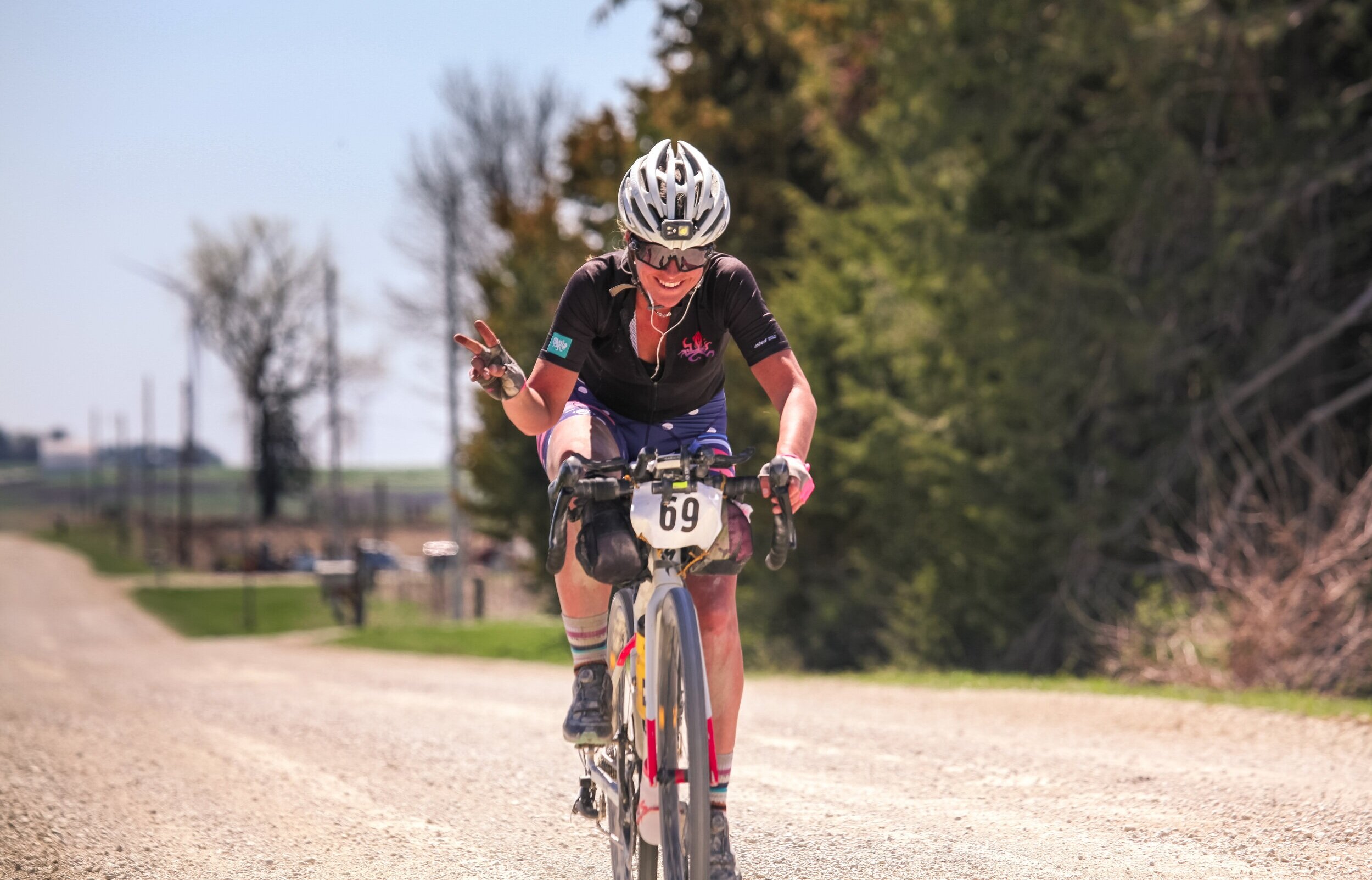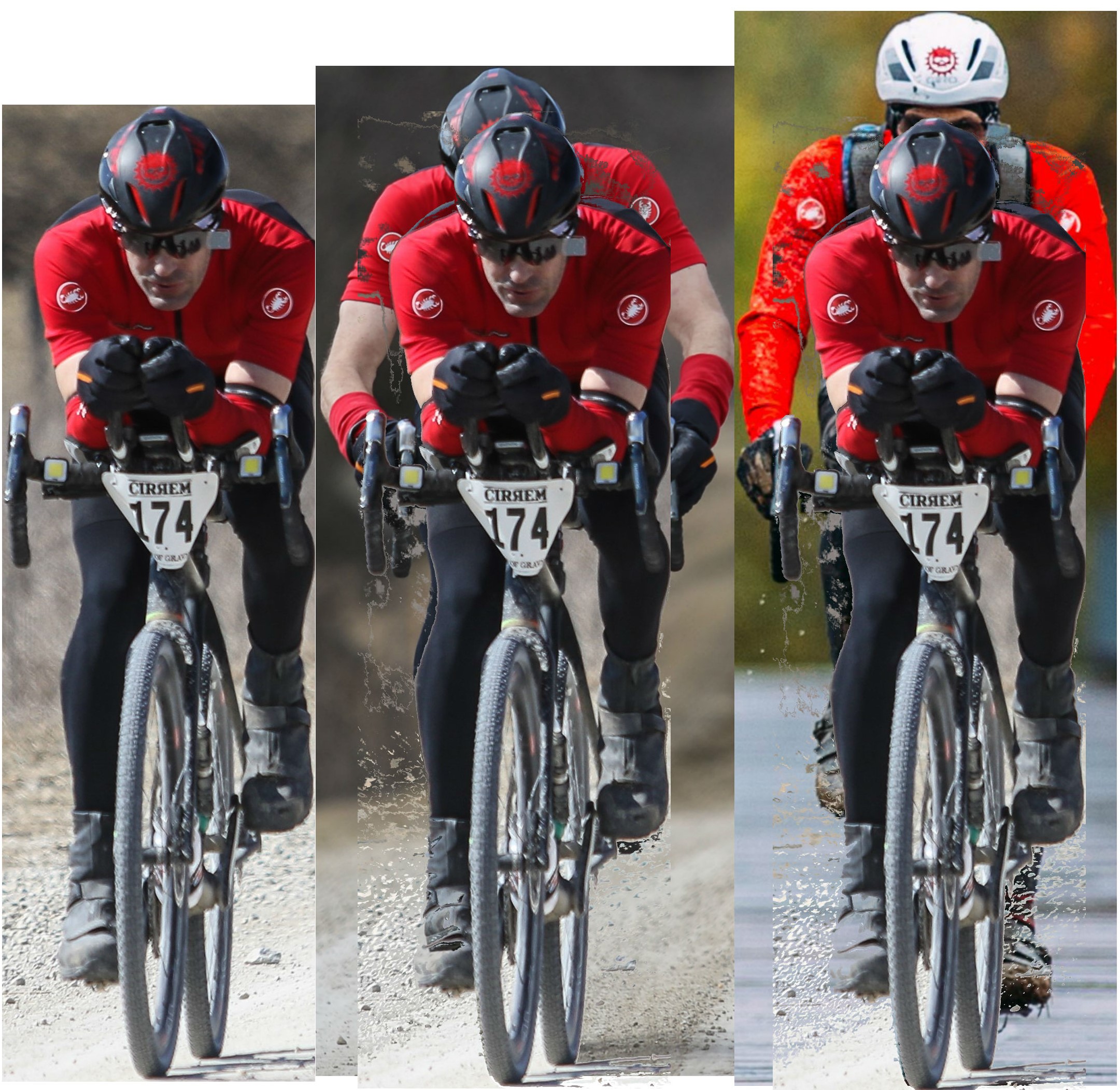Aerobars on a gravel bike... are you kidding?
/Coming from a triathlon / time trial background, I've always been a big believer in trying to squeeze every bit of speed from every single watt of power I produce. When I first started riding gravel, I took a bit of flack on mounting aerobars on my gravel bike. Although some of my friends used them (also coming from Tri backgrounds), most people didn't. Certainly it takes a bit to get accustomed to using them on a less predictable surface like gravel. That said, I find my heart rate drops 2 to 3 beats per minute in aero position over the hoods, and it gives my hands, wrists and back a bit of a break.
But, does it really have the potential to improve times in a gravel race? In my recent race at the 2018 Cirrem race, they "seemed" to provide benefits, as I was able to pass both individuals and small groups later in the race as the winds got higher. To help quantify the potential difference, I created a model using Best Best Split of the Cirrem course. I created three model bikes to replicate riding on the hoods, the drops or in aero position. All other aspects of the bike were identical, with the exception of the weight, as I dropped the hoods and drops bikes by 0.7 lbs to compensate for not having aerobars. The three bike models are shown below:
Bike based on riding on the Hoods position.
Bike in the Drops position.
Bike utilizing aerobars. Note the weight is slightly higher on this third bike to compensate for the aerobars.
To determine the CdA values, I utilized the general values from the Cycling Power Lab site, shown here. Essentially, Tops are at 0.4, Hoods at 0.35, Drops at 0.31 and Aerobars at 0.29. These were reasonably close to Best Bike Split values as well for each position. In my personal experience, I think these are likely a bit aggressive for gravel bike applications (or ultra cycling applications), as generally people have bags, water bottles, less aero clothing, pumps, etc. that you normally wouldn't see in traditional wind tunnel testing. That said, utilizing lower values would create more conservative differences between the models.
Note that I did check my bike models versus actual times / power values to ensure I was in the right zip code. I adjusted the bikes and course models to make sure they were reasonably close to actual times of some known rides, by incrementally increasing Crr (rolling resistance), and altering the climbing position and maximum speeds of the model. For consistency, I utilized the same 0.08 Crr value for all the bikes. For the routes, I used a climbing speed of 12 mph (meaning below this value you are on the hoods, and above you'd be in the drops or aerobars for those two options) and a maximum speed of 25 mph (meaning above that speed you'd stop pedalling... but gravity can take the bike faster).
The results for the Cirrem ride were shown below:
Cirrem. Riding on the drops at everything 12 mph and over would save nearly 5 minutes over riding the hoods, or 2.2% increase in speed. Riding on aerobars would save nearly 7.5 minutes over the hoods (3.4%) or about 2.5 minutes faster than riding the drops (1.2%).
For fun, I decided to see how it would impact a couple of local races I did last year as well. The first was the Buffalo 105, which was a longer race (on a windy day) that had less climbing (per mile) than Cirrem. The second was the Gents Race, which is a very flat course that had very little wind last year. The results for the two races:
The Buffalo 105. The drops would be a 10 minute improvement over the hoods, representing a 2.7% increase in speed. The aerobars would be almost a 15 minute increase over the hoods (4.1% increase in speed), and almost 5 minutes faster time than the drops (1.3% faster).
Gents race. The drops would be a 6 minute improvement over the hoods, representing a 3.2% increase in speed. The aerobars would be almost a 9 minute increase over the hoods (4.8% increase in speed), and almost 3 minutes faster time than the drops (1.6% faster).
In these three examples, we can see aerobars representing 3.4 - 4.8% increases in speed over the hoods (average of 4.1%), with aerobars improving speed 1.2 - 1.6% over the drops with an average of 1.4%. Clearly the impact will change based on the course (more hills, less benefit), speed (more benefit at faster speeds), drafting (less benefits when you draft) and wind conditions (more benefit on windy days). The other subtle difference between the models in each race was that although Normalized Power (NP) was roughly the same, Average Power (AP) was lower on the drops and aerobars. The reason is that the model assumes the same climbing position (so the peak power on the hills is about the same), but on the downhills you can spend more time coasting (or pedaling with less power) with a more aero position.
How would differences in size and/or power impact the numbers above? Of course not everyone is my size and weight (6'1" and 167 lbs). I re-ran the models with a hypothetical female at 5'4" and 130 lbs. To come up with the differences in CdA, I utilized an online calculator that estimates CdA based on height (this was also varied by position so that there was less difference as body position became more aggressive). I varied the power output to target finish times around the times of the top three females at Cirrem. The results are shown below:
Cirrem, hypothetical female. riding on the drops at everything 12 mph and over would save 4 minutes over riding the hoods, or 1.5% increase in speed. Riding on aerobars would save nearly 5.5 minutes over the hoods (2.2%) or a little less than 2 minutes faster than riding the drops (0.7%). On an aside, the top 3 females in cirrem finished within 2 minutes of each other, so it is possible that if some were riding aero versus hoods, it could have impacted finish placement.
I also created a hypothetical male, at my height (6'1") and 190 lbs, and then targeted a completion time around 4:30. These changes resulted in the following:
Cirrem, hypothetical male. riding on the drops at everything 12 mph and over would save over 5 minutes over riding the hoods, or 2.0% increase in speed. Riding on aerobars would save nearly 7.5 minutes over the hoods (2.9%) or a little less than 2 minutes faster than riding the drops (0.9%).
As noted earlier, I suspect the actual CdA's of most gravel riders are higher than "average" values used in this model, meaning that the aerobar benefits are likely higher than the model projectsions, in real world riding. For reference, I've added a couple of pictures of race photos of me in different riding positions:
Aero position left, crouched hood position center (climbing) and normal hoods position. The center position is likely close to a drops position from a head height, although with my hands in the drops my arms would not as been as wide. Note that I lined up the wheel sizes in each photo, so the scales are relatively close.
Superimposed image of aero on the other two positions. You can see the significant difference in cross sectional area between aero and the other positions. Besides the area differences, upright riding also increases the coefficient of drag as well.
In the end, if you race / ride in packs or teams most of the time, then the aerobars would only provide benefit when you are pulling... so it may be only a marginal benefit (and it may make you harder for your teammates to draft behind you). If you are comfortable (and disciplined/consistent) in getting into the drops when riding solo, then there is a small benefit to aerobars (0.7% to 1.4% increase in speed in the models above). If you are more like me who tends to spend more time solo and on the hoods rather than drops, then aerobars can provide a more significant boost in speed... around 2-4%, depending on your size and speed.
There are two important nuances to understand in the data / analysis above. The first is that if you are going slower, you will see a lower percentage improvement in speed by becoming more aerodynamic. That said, because you are going slower, you spend more time on the course, so those differences in speed yield relatively similar total time savings. I ran my original Cirrem data with lower power, targeting an hour slower total race time. This resulted in a speed difference between hoods and aerobars of 2.9%... well below the 4.8% increase in speed shown in the original example. But, the net time savings of aerobars at this lower pace still resulted in a total time improvement of over 8 minutes... almost as much time savings as when I was traveling at a higher rate (9 minutes). The point is that aero matters, even at slower speeds.
The last key point is that speed and power are not linear relationship. Without changing any other variables (aero, rolling resistance, etc.) to increase speed by 4% requires around 11% more power. So, would you rather try crank out 11% more watts for a 3-4 hour ride, or just use aerobars? ;)











